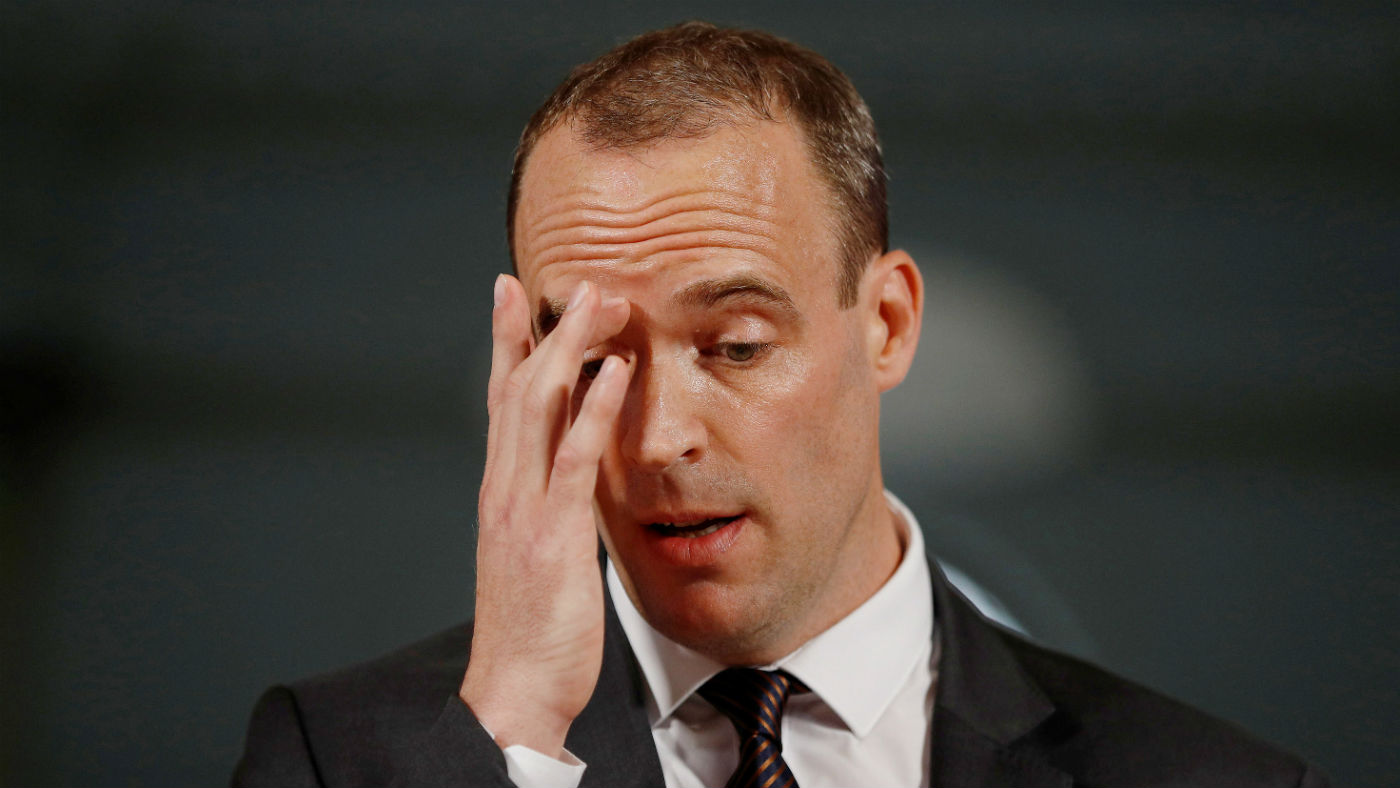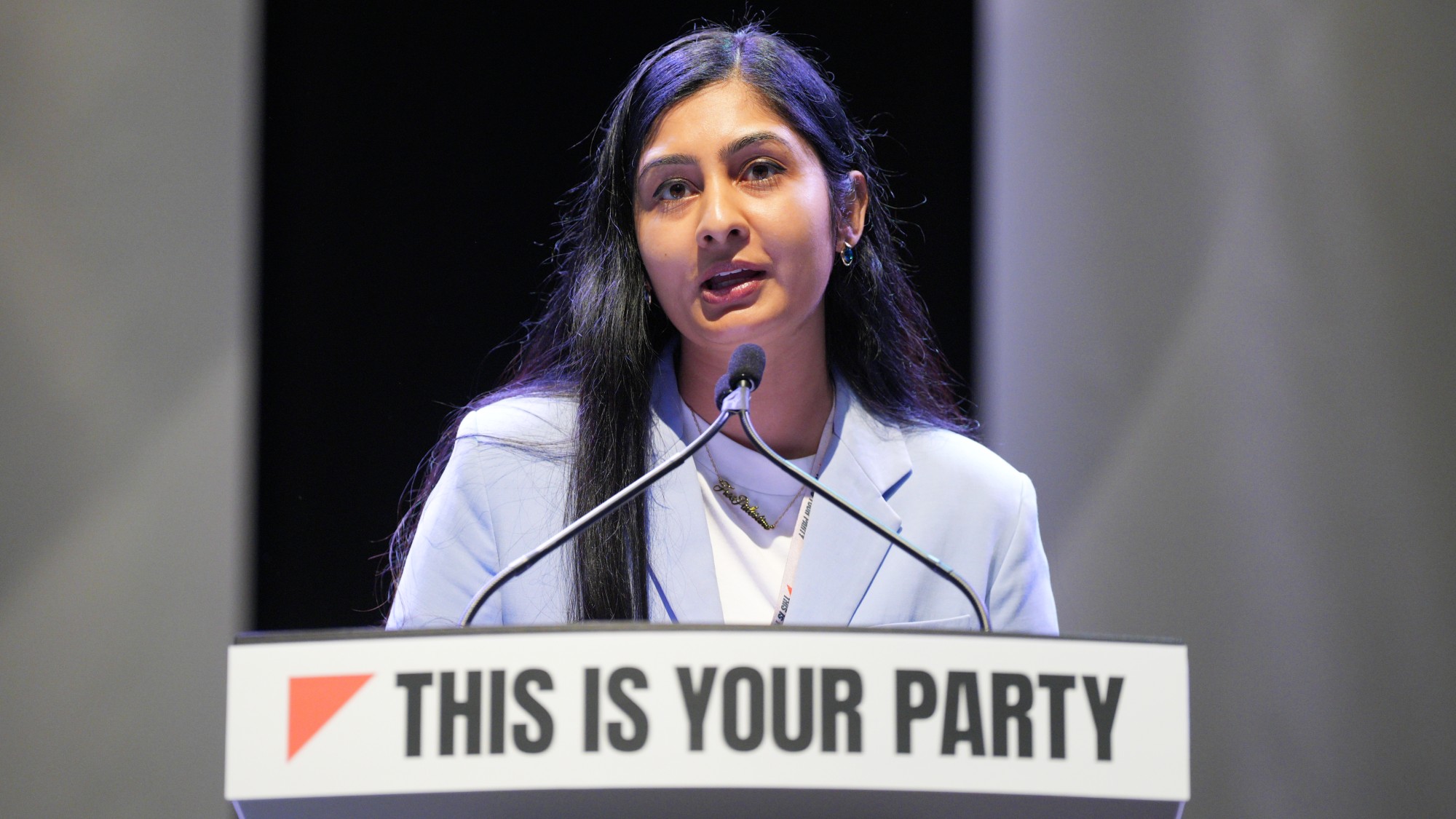What are the repercussions of redrawing the UK’s political map?
Safe seats turned into marginals as boundary changes risk stoking regional resentment and testing party loyalties

Cabinet ministers Ben Wallace and Dominic Raab face tough re-election contests after new boundary changes unveiled this week turned their constituencies into battleground marginals.
The UK is currently divided into 650 parliamentary constituencies, each represented by one MP in the House of Commons. But these divisions are based on electoral data from 2000 and there has since been significant population movement.
Revised proposals released by the Boundaries Commission this week “are an attempt to equalize UK parliamentary constituencies and rebalance representation towards London and the south of England, where the population has grown faster than the rest of the country”, reported Politico.
The Week
Escape your echo chamber. Get the facts behind the news, plus analysis from multiple perspectives.

Sign up for The Week's Free Newsletters
From our morning news briefing to a weekly Good News Newsletter, get the best of The Week delivered directly to your inbox.
From our morning news briefing to a weekly Good News Newsletter, get the best of The Week delivered directly to your inbox.
What will change?
Despite previous plans to reduce the number of MPs elected to Parliament to 600, the number of constituencies for the UK as a whole will be retained but rearranged so that each area has no less than 69,724 parliamentary electors and no more than 77,062, in order to create a more representative spread.
As a result, England - where the average electorate across constituencies is currently 72,200 – will gain ten constituencies. Scotland, with an average electorate of 67,200, would lose two seats, while Wales (average 56,000) will lose eight, and Northern Ireland (68,300) will continue to have 18 seats.
The proposals will now go out for a month-long consultation but few expect any major changes except around new constituency names.
The final constituency map will be presented to parliament next summer and is due to be in place by late 2023, meaning the new boundaries “will automatically take effect for any subsequent general election, requiring vast efforts to allocate officials and polling stations to the redrawn constituency maps”, said The Guardian.
A free daily email with the biggest news stories of the day – and the best features from TheWeek.com
Who could be affected?
Defence Secretary Ben Wallace and Justice Secretary and Deputy PM Dominic Raab are the highest-profile MPs at risk of losing their seats under new boundary changes.
Politico’s London Playbook described Wallace’s redrawn Wyre and Preston North seat as “a super-marginal, based on the past voting habits within its borders”, while the Lib Dems will be confident of winning Raab’s Esher and Walton seat in Surrey.
Meanwhile, embattled Tory MP Gavin Williamson failed in his bid to prevent his South Staffordshire constituency being carved up, “which could see him struggle for reselection ahead of the next general election”, said The Independent. He will face a fight with colleagues Mike Wood and Bill Cash to be on the ballot.
Former health secretary turned I’m a Celebrity contestant Matt Hancock could see his West Suffolk seat abolished and his area split between two other constituencies.
For Labour, Keir Starmer faces being moved out of his own constituency, with his home no longer within the redrawn Holborn and St Pancras seat.
“It could leave Starmer in the awkward position of having to represent a constituency in which he no longer lives,” said The Times. However, a Labour insider quipped that the dilemma would not adversely affect the leader because “Keir isn’t planning on living in his constituency after the election — the plan is Downing Street”.
Former Labour leader Tony Blair’s Sedgefield constituency, which went to the Tories at the last election, is also set to be abolished.
Will it impact the next election?
The changes look likely to favour the Conservatives, with southeast England gaining at the expense of the north and Wales.
Lord Hayward, the Tory peer and pollster who is involved in the party’s response to the proposals, said: “The new seats are in the southeast, east and southwest, which is where the Tories dominate. So it is a shift of about five to ten seats — which on 2019 results would mean a majority of 100.”
Despite a double-digit lead for Labour in the polls, this makes the opposition party’s path back to power even harder, especially if it carries through on its pledge not to govern with the support of the SNP.
As in Wales, there is “likely to be fury” in Scotland that the number of MPs it sends to Westminster will be cut from 59 to 57, said The National, “especially coming at such a sensitive time for the union”.
Politico’s Eleni Courea predicted the proposed changes could also cause a headache for Rishi Sunak as “many of those left without seats will be forced to jostle with colleagues over newly drawn areas bearing little resemblance to the ones they have represented for years”.
With a crop of Tory MPs “being shunted from safe to marginal seats, or in some cases left with no seat at all”, said Courea, “it’s a shift that could weaken the bonds of loyalty that normally support a prime minister”.
-
 The week’s best photos
The week’s best photosIn Pictures A new year dawns, a volcano yawns, and more
-
 8 incredible destinations to visit in 2026
8 incredible destinations to visit in 2026The Week Recommends Now is the time to explore Botswana, Mongolia and Sardinia
-
 Wave of cancellations prompt Kennedy Center turmoil
Wave of cancellations prompt Kennedy Center turmoilIN THE SPOTLIGHT Accusations and allegations fly as artists begin backing off their regularly scheduled appearances
-
 The MAGA civil war takes center stage at the Turning Point USA conference
The MAGA civil war takes center stage at the Turning Point USA conferenceIN THE SPOTLIGHT ‘Americafest 2025’ was a who’s who of right-wing heavyweights eager to settle scores and lay claim to the future of MAGA
-
 Is a Reform-Tory pact becoming more likely?
Is a Reform-Tory pact becoming more likely?Today’s Big Question Nigel Farage’s party is ahead in the polls but still falls well short of a Commons majority, while Conservatives are still losing MPs to Reform
-
 The launch of Your Party: how it could work
The launch of Your Party: how it could workThe Explainer Despite landmark decisions made over the party’s makeup at their first conference, core frustrations are ‘likely to only intensify in the near-future’
-
 What does the fall in net migration mean for the UK?
What does the fall in net migration mean for the UK?Today’s Big Question With Labour and the Tories trying to ‘claim credit’ for lower figures, the ‘underlying picture is far less clear-cut’
-
 Will the public buy Rachel Reeves’s tax rises?
Will the public buy Rachel Reeves’s tax rises?Today’s Big Question The Chancellor refused to rule out tax increases in her televised address, and is set to reverse pledges made in the election manifesto
-
 Five takeaways from Plaid Cymru’s historic Caerphilly by-election win
Five takeaways from Plaid Cymru’s historic Caerphilly by-election winThe Explainer The ‘big beasts’ were ‘humbled’ but there was disappointment for second-placed Reform too
-
 The Chinese threat: No. 10’s evidence leads to more questions
The Chinese threat: No. 10’s evidence leads to more questionsTalking Point Keir Starmer is under pressure after collapsed spying trial
-
 The new age of book banning
The new age of book banningThe Explainer How America’s culture wars collided with parents and legislators who want to keep their kids away from ‘dangerous’ ideas